REGULATIONS
‘Certified soundproofing London’
Building Regulations – Part E – Resistance to the Passage of Sound
Building Regulations – Part E is comprised of four sections; E1, E2, E3 and E4, summarised below.
The official government document can be viewed, in full, via the following link: Approved Document E
E1 – Protection against sound from other parts of the building and adjoining buildings
E1 applies to residential buildings, including flats and apartments, semi detached and terraced housing, hotels, hostels, nursing homes and student accommodation. E1 compliance is achieved by constructing internal separating walls and floors/ceilings to the standards outlined in table 1a, below. These standards relate to airborne and impact sound.
| Table 1a | ||||||
|
||||||
| Purpose built dwelling-houses & flats | Walls | 45 | – | |||
| Floors and Stairs | 45 | 62 | ||||
| Dwelling-houses & flats formed by material change of use | Walls | 43 | – | |||
| Floors and Stairs | 43 | 64 | ||||
E2 – Protection against sound within a dwelling house
E2 applies to the internal walls of a dwelling house between bedrooms and between a bedroom and a water closet, as well as internal floors/ceilings. E2 does not apply where the internal wall contains a door or where the water closet is part of an en-suite bathroom. E2 compliance is achieved by constructing internal separating walls and floors/ceilings to the standards outlined in table 1b, below. These standards relate to airborne and impact sound.
| Table 1b | ||||||
|
||||||
| Purpose built rooms for residential purposes | Walls | 43 | – | |||
| Floors and Stairs | 45 | 62 | ||||
| Rooms for residential purposes formed by material change of use. | Walls | 43 | – | |||
| Floors and Stairs | 43 | 64 | ||||
E3 – Reverberation in common internal parts of a residential building
E3 applies to common areas, such as stairways, corridors and entrance halls within buildings containing flats and apartments and including hotels, hostels, nursing homes and student accommodation. It stipulates that these spaces must have adequate prevention of reverberation. (Reverberation is the persistence of sound in a particular space after the original sound is removed).
E4 – Acoustic Conditions in Schools
E4 applies to rooms and spaces within schools. It stipulates that these spaces must be designed so that they provide adequate protection against noise disturbance appropriate to their intended use.
Control of Noise at Work Regulations 2005
The Control of Noise at Work Regulations 2005 came into force for all industry sectors on the 6th April 2006 (except for the music and entertainment sectors where they came into force on the 6th April 2008).
The aim of the regulations is to ensure that the hearing of employees is protected from noise levels, at their work place, which could cause them to lose their hearing and/or to suffer from tinnitus (permanent ringing in the ears).
The regulations stipulate that the level at which employers must provide hearing protection and hearing protection zones is 85 dB (daily or weekly average exposure). There is also an exposure limit value of 87 dB, accounting for any reduction in exposure provided by hearing protection, above which workers must not be exposed.
Further details on the Control of Noise at Work Regulations 2005 are set out in the attached Health and Safety Executive (HSE) document, below.

 +44 (0) 20 3858 0833
+44 (0) 20 3858 0833 email
email





















